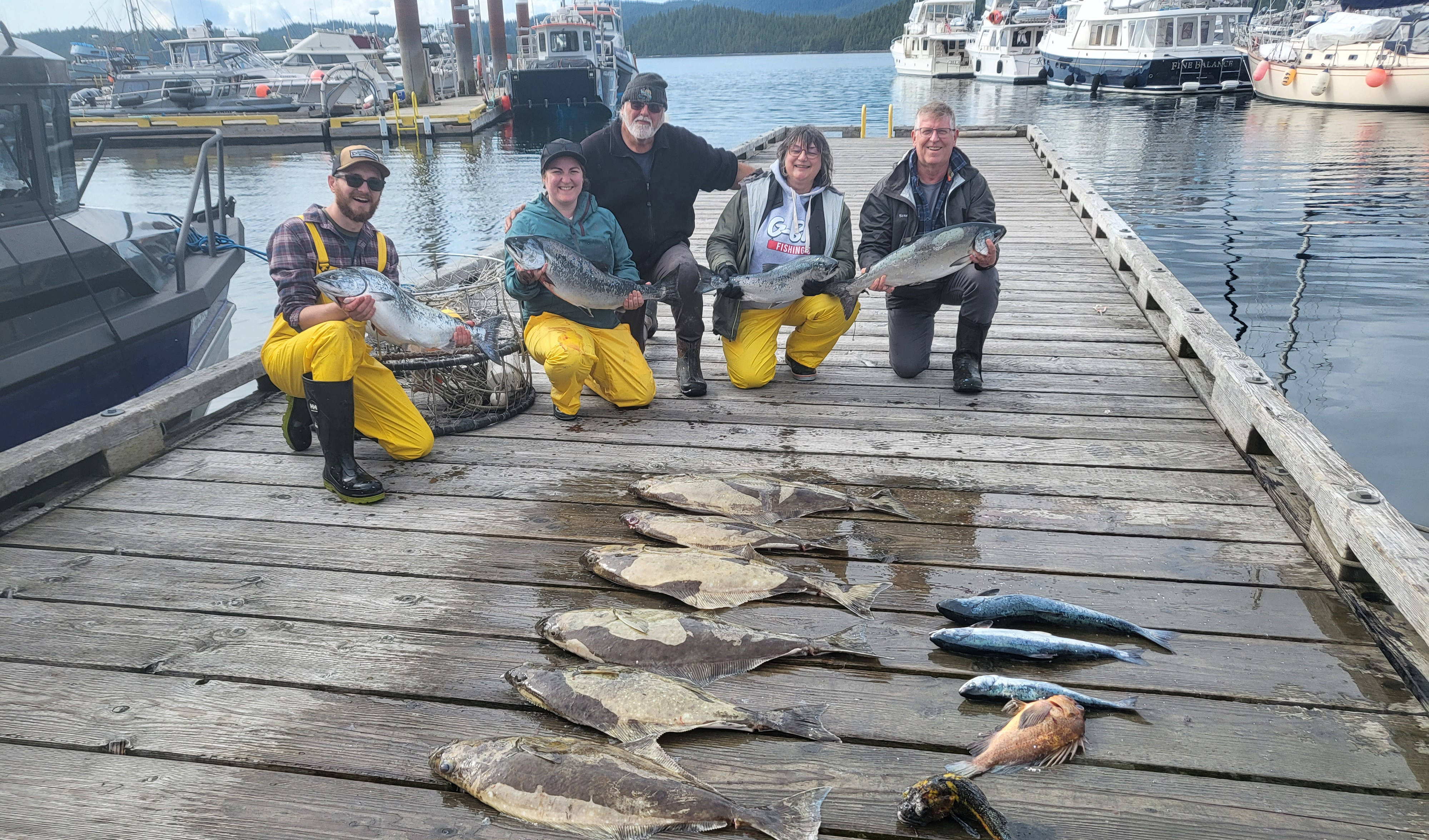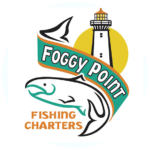

Whether angling or dining, salmon are the most sought-after fish on the west coast. From determining the perfect gear, to gauging the depth and location, to the first strike of the rod, to fighting and landing and finally dining on your prized catch, salmon fishing offers once in a lifetime excitement. And Foggy Point has all the expertise and gear to make this dream a reality.
More About West Coast Salmon & Fishing
https://foggypoint.com/product/book-a-charter/Salmon live most of their life in salt water, returning from spring through late fall to spawn in fresh water, but it is in salt water that the angler will encounter the brightest colours and the most challenging fight.
Finding and landing salmon comes down to three main things: time on the water, skill and technique. The more time with lines in the water the better the chances. But knowing where and when to fish a spot, what type of gear, lure, or bait to use is most important. Foggy Point’s professional guides know this critical information through training and long experience.
Types of Salmon
Four types of salmon are primarily targeted in these waters, but of most interest are the Chinook (King, Spring) and Coho (Silvers).
Chinook
The Chinook, also known as spring or king salmon, are the largest of the five species of salmon found in Chatham Sound. A Chinook over 13.5 kg (30 lbs.) is known as a “Tyee.” These salmon rarely leap partly due to their size. Their fight is powerful with long, repeated runs. The battle with a large Chinook can last a half-hour or more, leaving the angler both exhausted and exhilarated.
Although smaller “feeder” or “winter” springs can be caught year-‘round, the Chinook run begins in mid-May with larger Tyees arriving late-June or early July. Black gums and a silver, spotted tail distinguish the Chinook from other salmon, and the rich flesh ranges from deep red to white. They live 3-7 years, and weigh 1.5 to 30 kg (3 to 65 lbs.)
Coho
Beginning in late July, and peaking from mid-August to mid-September, Coho are renowned fighters. They make fast, wild, erratic leaps on the line. The Coho put on a show in the air and test the angler on their speed of reeling as they race toward the vessel trying to release the hook. No fish offers finer sport.
Coho are bright silver in saltwater, giving them the alternate name “silvers.” They have a white mouth, with white gums at the base of the teeth and black tongues, a few spots along the upper portion of their bodies, silver tails, and highly-prized, deep red flesh. Ranging in size from 1.3 to 14 kg (2 to 30 lbs.), coho usually live three years and grow rapidly in their final year. During the last part of the run the “northern coho,” generally larger fish, move into the waters of Chatham Sound.
Chum
Fun to catch and excellent smoked, the chum, or “dog,” salmon are known for long, nearly-unstoppable runs and bulldogging tactics.
Chum run from August until October. Similar to the sockeye salmon, though larger, chum have silvery, green sides in salt water and faint, grid-like bars as they near spawning streams. Chum live three-to-five years, and typically weigh 4.5 to 6.5 kg (10-14.5 lbs.), though they have been known to reach as much as 15 kg (34 lbs.).
Pink
Fun to catch and excellent smoked, the chum, or “dog,” salmon are known for long, nearly-unstoppable runs and bulldogging tactics.
Chum run from August until October. Similar to the sockeye salmon, though larger, chum have silvery, green sides in salt water and faint, grid-like bars as they near spawning streams. Chum live three-to-five years, and typically weigh 4.5 to 6.5 kg (10-14.5 lbs.), though they have been known to reach as much as 15 kg (34 lbs.).
CHINOOK*
May – July
COHO*
July – September
CHUM*
August – October
PINK**
July – August
* Also available October
**Also available Sept. – October
Book your West Coast fishing adventure today or contact us to learn more about our exciting salmon or halibut fishing charters in Prince Rupert, British Columbia, Canada.
